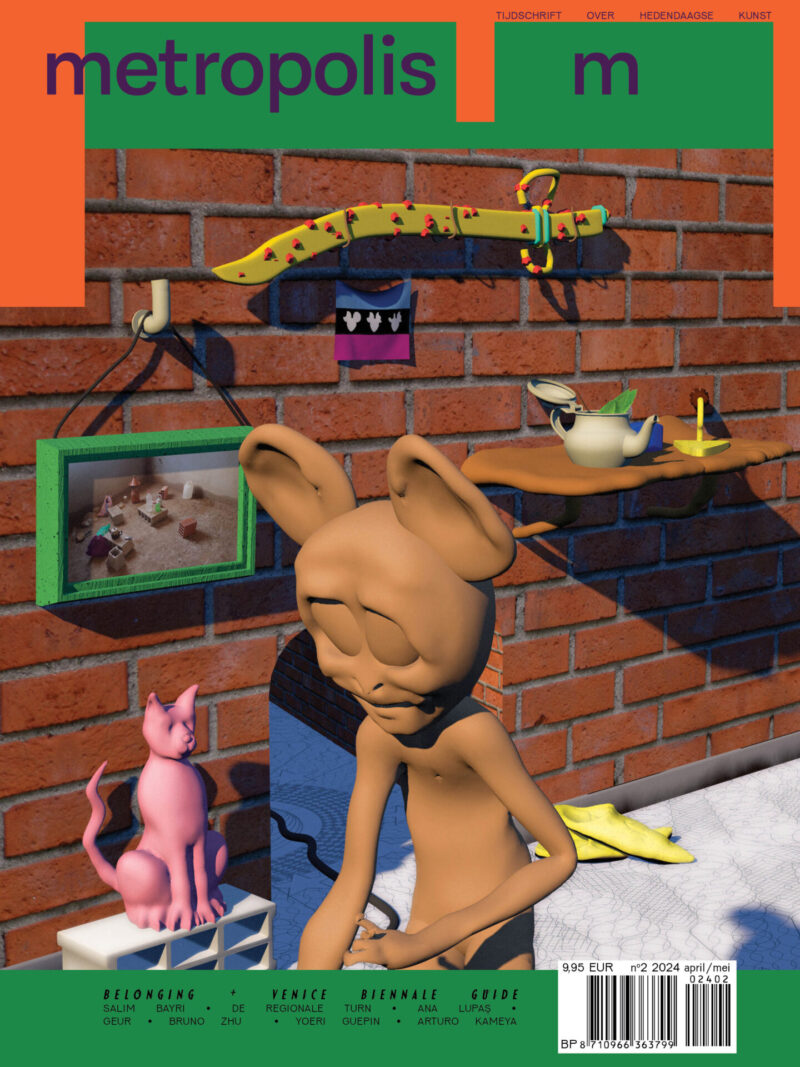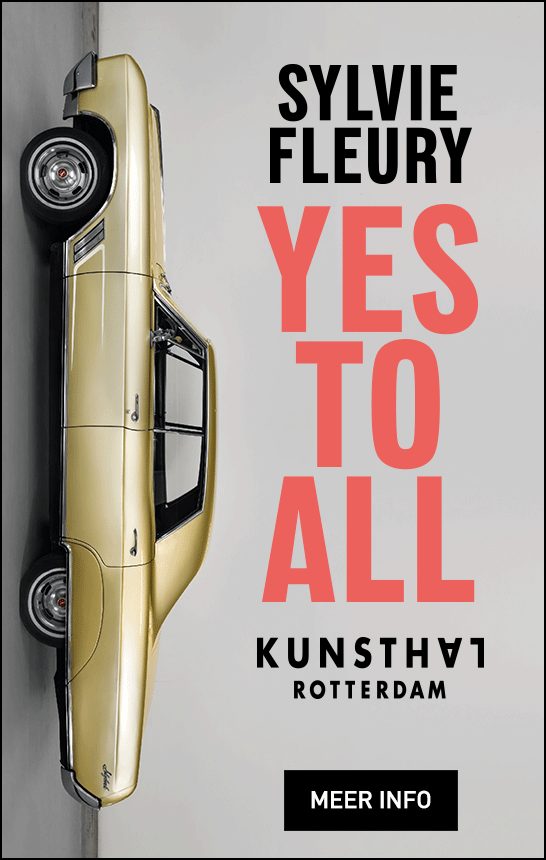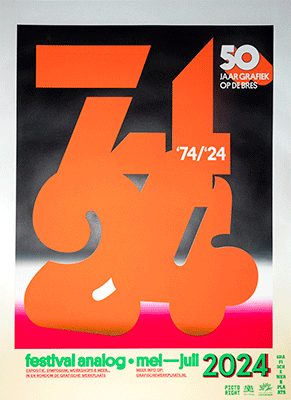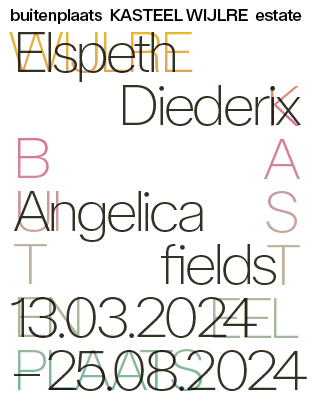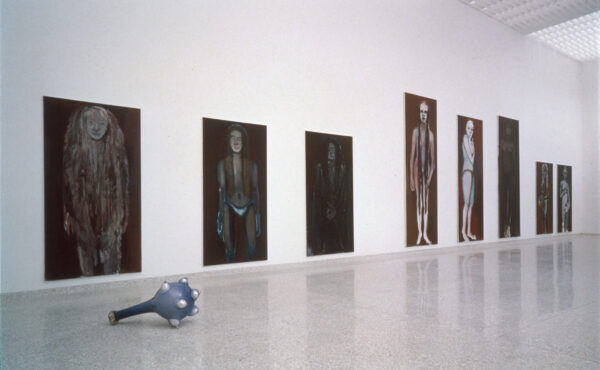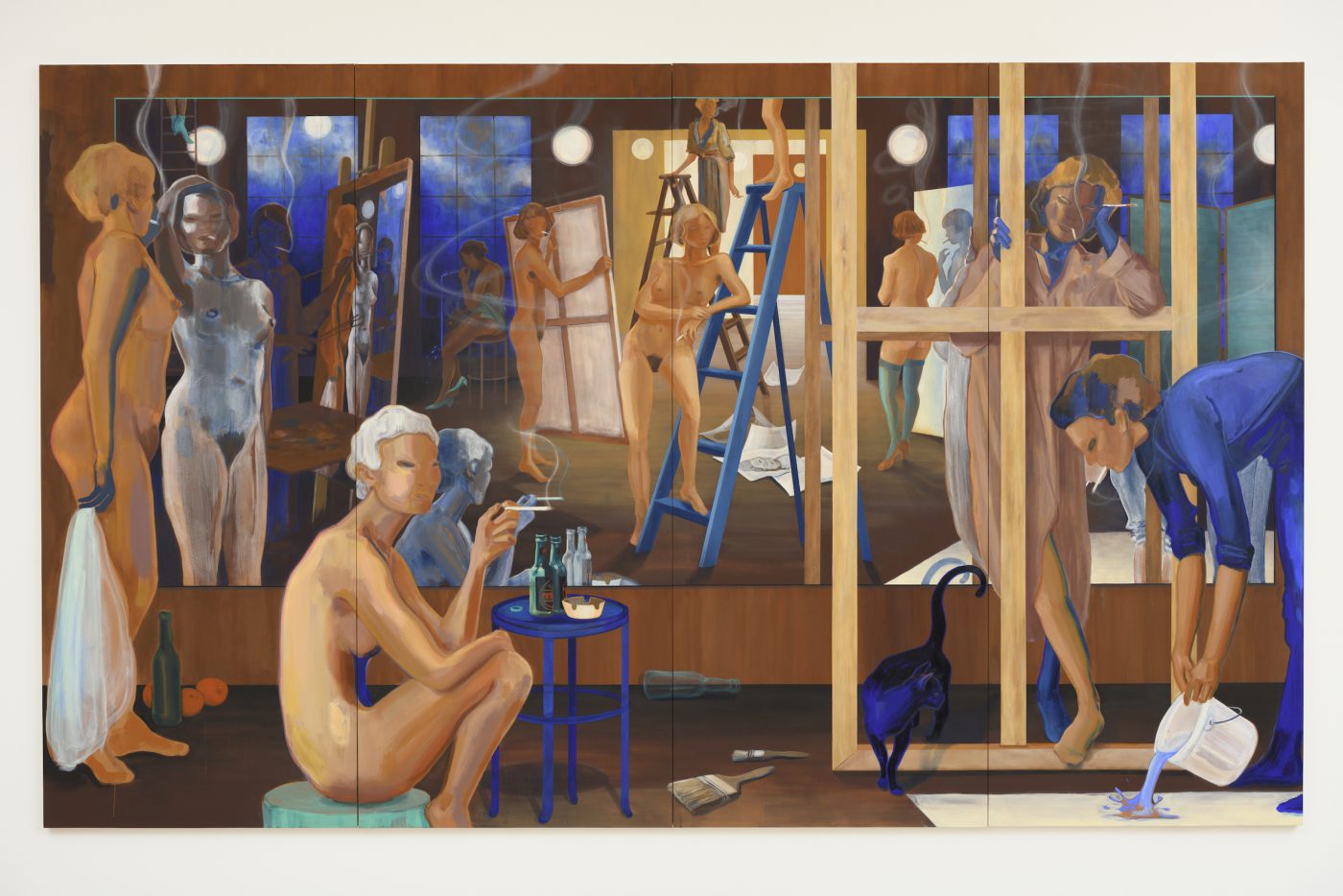
‘Smoke and Mirrors’ (2020), courtesy Lisa Brice; Stephen Friedman Gallery, London and Salon 94, New York. Photo: Peter Cox
Painting women painting women – on the work of artist Lisa Brice
Women claiming their place in art history – Lisa Brice’s work shows women at work, painting women, many of them in cobalt blues and deep bright reds. Her work is full of quotes from art history questioning the way white men used to claim this figurative tradition.
The feminine figures in Lisa Brice’s paintings remind me of my friends, our endless time together in rooms, outside, whether interacting with each other or not. I first experienced Brice’s work when I went to visit her exhibition at Stephen Friedman in London on a lunch break in November 2019. I felt profoundly at home when immersed in her large scale, predominantly blue paintings with tones of pink and red depicting scenes of women going about their own business in unspecified spaces. The works reminded me of spas and saunas, because of the blue colour prominent in each of them, but also since these are the only spaces I’ve seen women in the nude not subject to the male gaze.
Nude femmes meandering, pondering, looking out, drinking or smoking: Brice’s work is refreshing in that it paints these scenes from a completely different perspective than I’m used to. The way Brice’s work breaks with the male, colonial gaze reminds me of what Michaela Coel achieves in I May Destroy You, a tv-series that doesn’t sit within formulaic production tropes but takes a predominantly Black British cast to highlight the story of a young woman seeking to rebuild her life after being raped.
[blockquote]Brice’s works remind me of spas and saunas, because of the blue colour prominent in each of them, but also since these are the only spaces I’ve seen women in the nude not subject to the male gaze
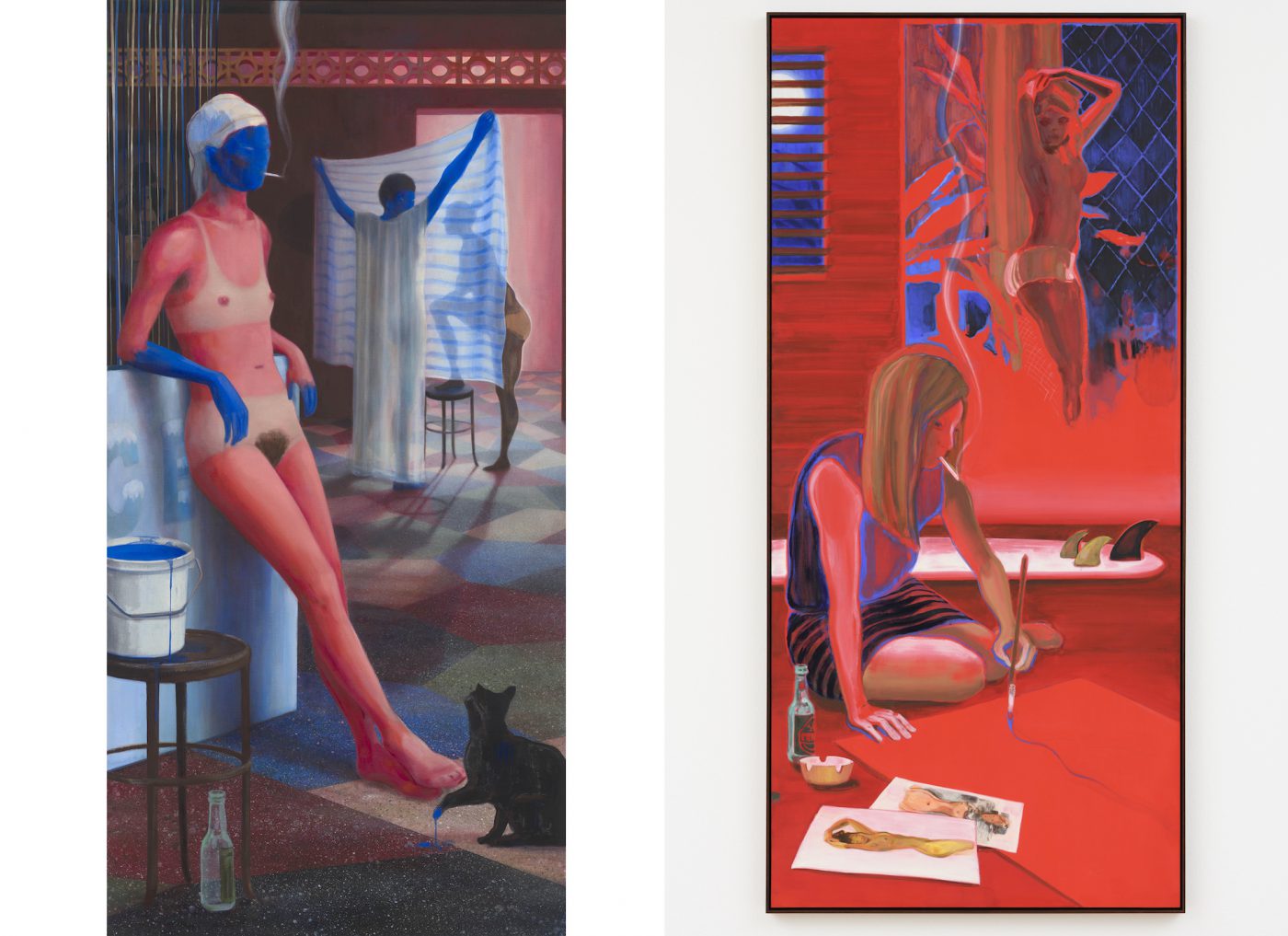
Left: Lisa Brice, Untitled, 2019. Copyright Lisa Brice. Courtesy the artist and Stephen Friedman Gallery, London. Collection Harry G. David. Photo: Todd-White Art Photography
Born and raised in South Africa, Brice is now based between London, and Trinidad, creating work that interrogates and repurposes the narrative of traditional figurative painting created by white men. Her paintings are filled with art historical references that I am certainly unaware of on first viewing of her works. As I become aware of these references, it encourages me to look to corners of works my eyes are not initially drawn to. I spend more time imagining the person each character may be. These figurative paintings alter the canon of white men painting women, for white men.
Brice’s works for her new show Smoke and Mirrors at KM21 (formerly GEM Contemporary Museum of Art) in Den Haag, curated by Yasmijn Jarram sees a development in consideration of women in figurative painting, moving from beyond the model, to the woman artist: Jarram tells me the focus has “shifted, evolved to how female artists represent themselves, paint themselves.” Jarram has included some smaller earlier works from 2015 and 2012, with yellow tones including a self portrait to show that Brice has explored these relations before. Now they take centre stage in this exhibit. The Kunstmuseum, as the press release notes, has a history of showing overlooked painters, particularly female painters – including a 1935 exhibit featuring only female artists (commendable considering the constant upheaval throughout the 20th and 21st centuries for the lack of women artists presented in art museums).
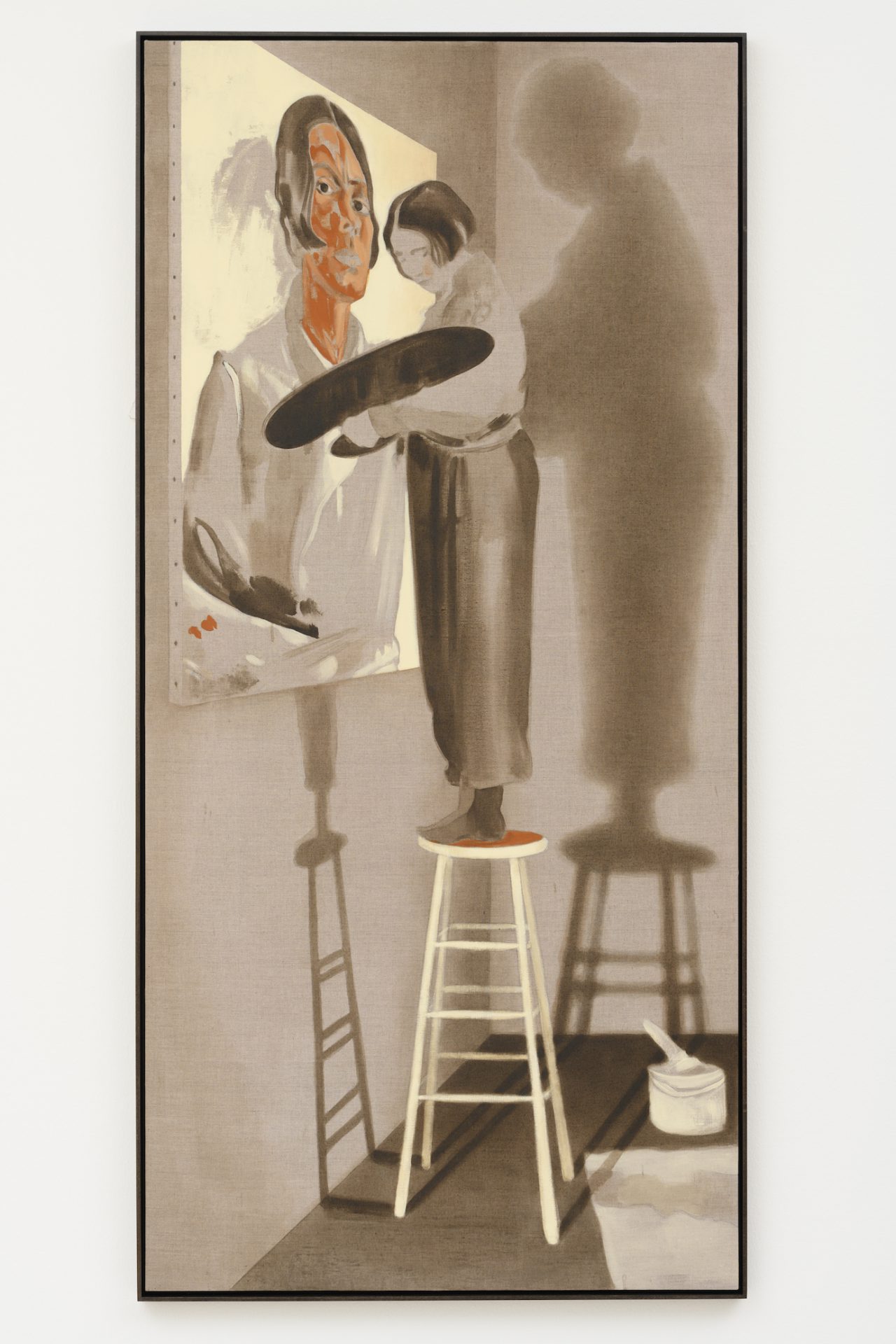
One of the most striking new paintings is Charley, and it highlights a new direction Brice’s work is moving towards, featuring a notably different colour palette from the classic ‘Brice cobalt blues’. The grays and browns in the work, as well as the colour of canvas, are inspired by a black and white photograph of artist Yayoi Kusama at work in her studio. The painting is made in response to Dutch painter Charley Toorop’s Self-Portrait with palette, sat next door in Kunstmuseum. Jarram tells me Brice saw this upon visiting Kunstmuseum next door to KM21. She was unfamiliar with Toorop’s work prior and further researched the artist. Situated on the wall behind Charley is a selection of sixteen new blue watercolours. Amongst them another homage to Toorop, a figure painted with strong jawlines resembling the way Toorop painted herself, with her arm out the frame, assumingly holding a brush painting herself. These new blue works show many women in the act of painting, or poised and pausing by canvases. These pieces hone in on what Brice depicts throughout new works in the exhibition, an examination of her painting women painting women. The layers of influences and homages to women artists who have paved the way are throughout much of Brice’s work but become perhaps most transparent here.
Cobalt blue features heavily in Brice’s work and is intended to resemble the neon blue lights that turn on at dusk, the hours between day and night. Additionally, the colour ensures the viewer cannot easily read ethnicity – Brice explains that blue is also used in carnival time in Trinidad where the act of covering oneself in blue paint is to liberate oneself from their own character. It is the first colour you see upon entering KM21, when greeted with a large untitled work from 2016 featuring slightly translucent feminine figures amongst tiled floors. Rings of smoke glide across the room. You can’t quite tell if some of the women are being seen through a window or a mirror.
Brice’s paintings forming the After Embah series from 2017-2018 are striking in the back of the space, with deep bright reds filling the canvases. They stand out to the eye in a white space where the colour palette used mostly throughout the exhibit is blues, with some browns and greys, until you reach the back. These scenes depicting and influenced by life in Trinidad, and named after Brice’s friend and artist who has passed, Emheyo Babbahah, feel in a different hour or world to the other works. These are the pieces that first drew me to Brice.
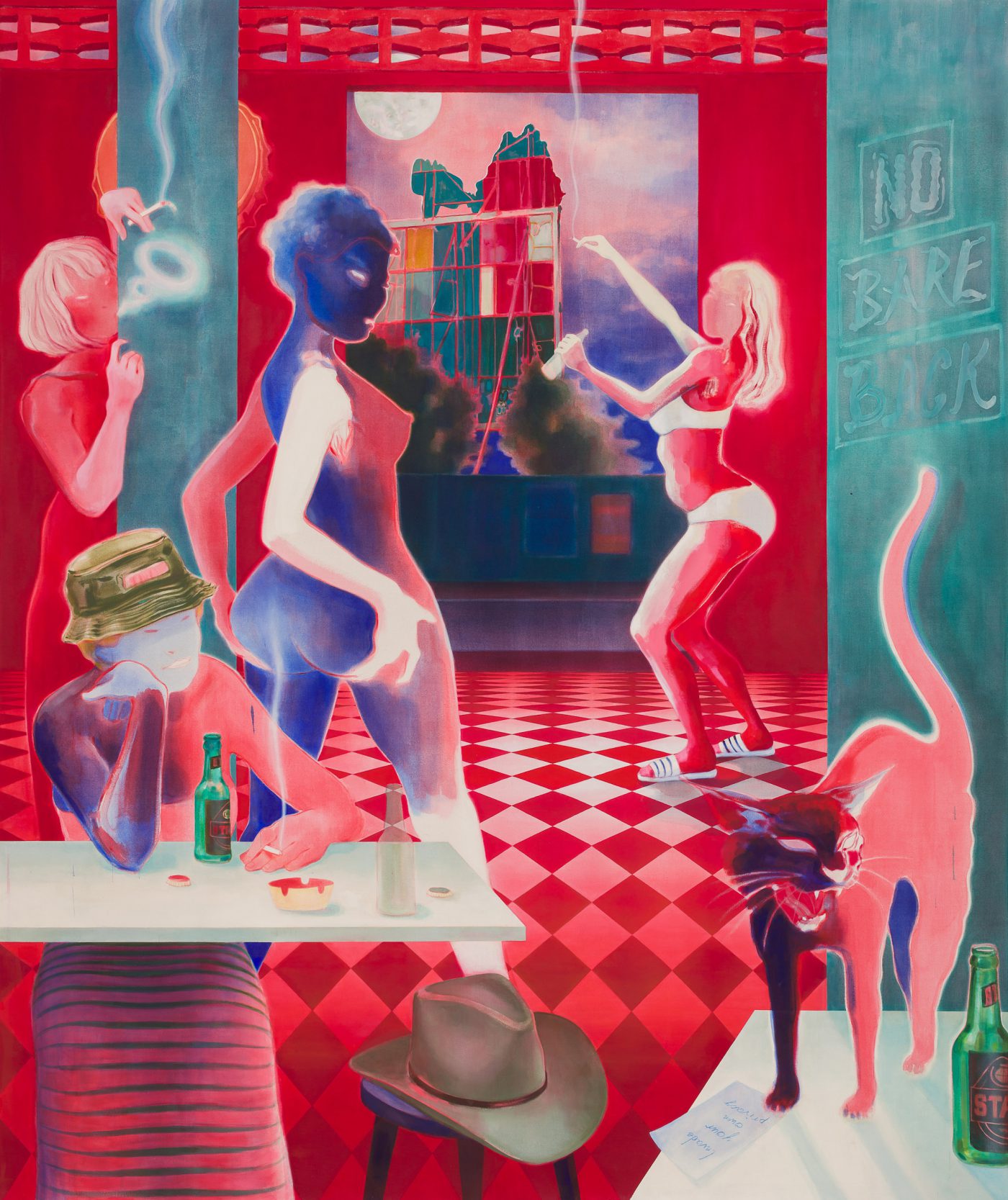
Lisa Brice, After Embah, 2018. Copyright Lisa Brice. Courtesy the artist and Stephen Friedman Gallery, London. The Deighton Collection, London. Photo by Mark Blower
Part of her examination of female artists representing themselves sees new self portraits. Red Studio GR09 is the beginning or for me, endpoint of the exhibition, standing out as the most focal self portrait. It bridges the striking red hues amongst the blue that Brice uses when painting scenes clearly influenced by her life in Trinidad, much like the palette used in the After Embah paintings filling the back of the gallery. The self portrait merges this with Brice’s examination of women painting by depicting herself at work on a painting, seemingly her own work Boundary Girl in the backdrop. It feels mystical, the moon is out the window, but otherwise we don’t know what hour it is.
The title piece of the exhibition Smoke and Mirrors is perhaps my favorite piece of Lisa Brice’s to date, situated in the centre of the space, it is her largest composition yet. The lights reflected in the mirror, look much like the moon out the window. A mirror takes up the bulk of the painting, making it unclear what’s inside and what’s outside. While the title of the show Smoke and Mirrors alludes to a facade, both mirrors and smoke are literally present in many of her works, every figure here is in the act of smoking. This piece also features more browns, canvas tones with canvas frames and the pouring of a tub of blue paint (seen in the corner of other works also) bringing together the depiction of female artists painting themselves, feminine figures looking at themselves in reflection, together in a space. My favourite pieces are when these figures come together in the large scale works. Smoke & Mirrors also contains elements seen across many Brice paintings: the blue cat, the presence of Trinidadian ‘Stag’ beer, the smoking, the reflection, and the poses.
Brice captures relatable moments on canvas that feel outside of time, brief and magical
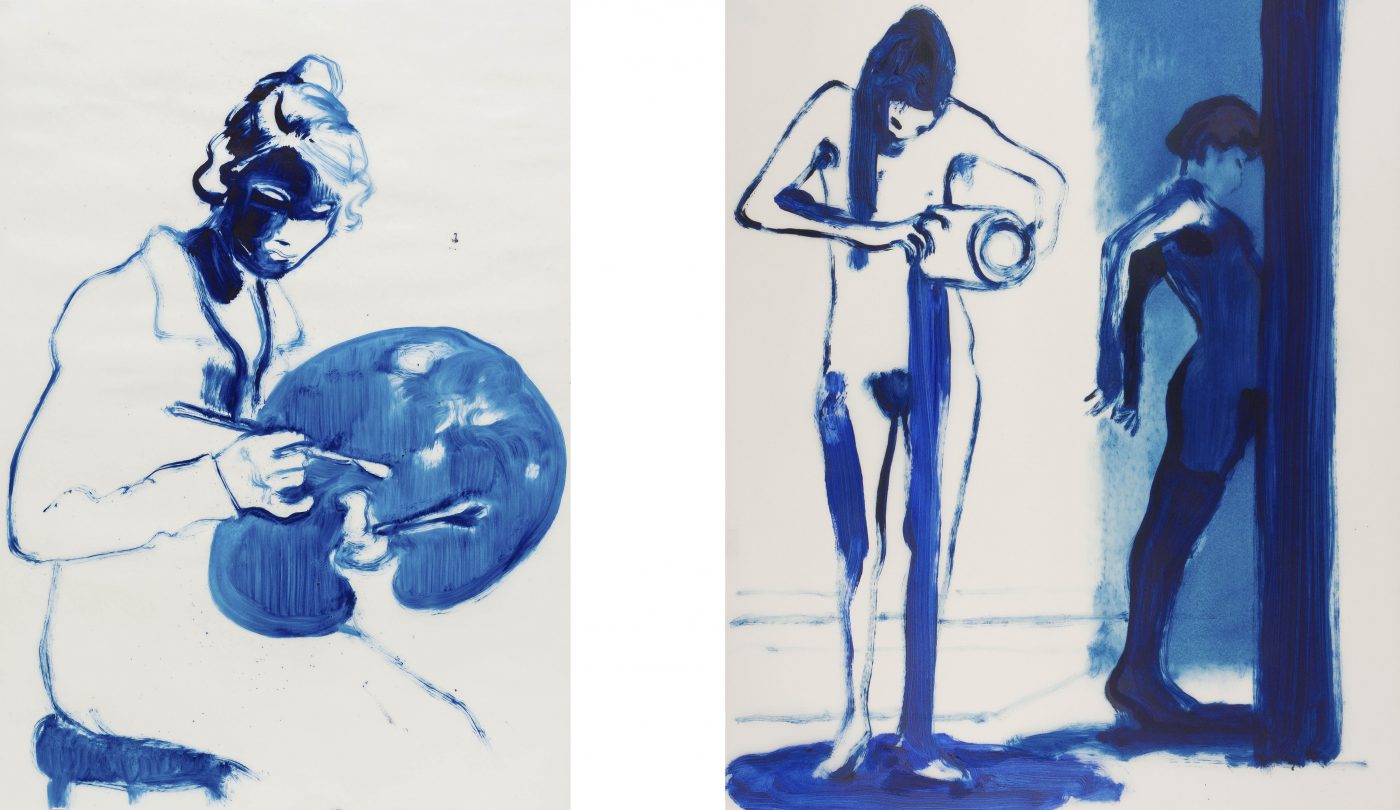
Left: Lisa Brice, Untitled, 2019. Copyright Lisa Brice. Courtesy the artist and Stephen Friedman Gallery, London. Private Collection. Photo by Mark Blower

Right: 'Red Studio GR 09' (2020)
It is because of her capturing relatable moments on canvas that feel outside of time, brief and magical in these expansive settings, that Brice is one of the best painters working at the moment in my opinion. Smoke and Mirrors brings together Brices’ examinations of the female model in figurative painting, women looking at themselves, looking at their subjects and objects, depicting themselves. These pieces are most satisfying for spending time with works that immortalise these femme figures in moments of pausing, between activities, to themselves and for themselves.
This exhibit Smoke and Mirrors has an accompanying catalog to be released in March, in collaboration with the galleries that represent Lisa Brice: Stephen Friedman and Salon 94. This is surprisingly the first catalog of Brice’s work, featuring essays from Aïcha Mehrez (Assistant Curator at Tate), Jennifer Higgie (Editor in Large at Frieze), Laura Smith (curator at Whitechapel Gallery) and Attillah Springer (Trinidadian author).
Sophie van Well Groeneveld
is a writer